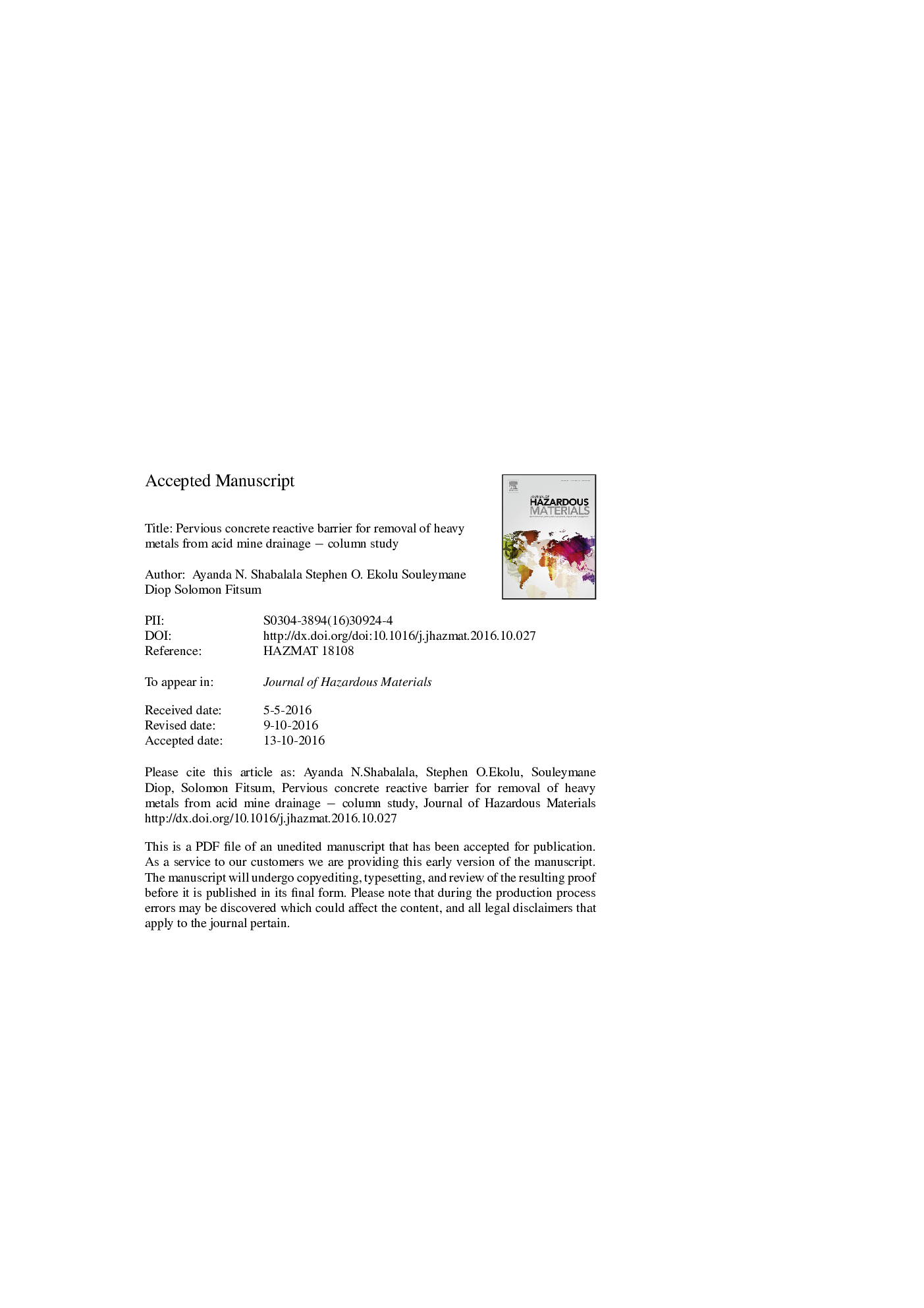| Article ID | Journal | Published Year | Pages | File Type |
|---|---|---|---|---|
| 4979790 | Journal of Hazardous Materials | 2017 | 32 Pages |
Abstract
It was found that the removal efficiency levels of Al, Fe, Mn, Co and Ni were 75%, 98%, 99%, 94% and 95% for WZ; 87%, 96%, 99%, 98% and 90% for TDB, respectively. The high rate of acid reduction and metal removal by pervious concrete is attributed to dissolution of portlandite which is a typical constituent of concrete. The dominant reaction product in all four columns was gypsum, which also contributed to some removal of sulphate from AMD. Formation of gypsum, goethite, and Glauber's salt were identified. Precipitation of metal hydroxides seems to be the dominant metal removal mechanism. Use of pervious concrete offers a promising alternative treatment method for polluted or acidic mine water.
Keywords
Related Topics
Physical Sciences and Engineering
Chemical Engineering
Chemical Health and Safety
Authors
Ayanda N. Shabalala, Stephen O. Ekolu, Souleymane Diop, Fitsum Solomon,
